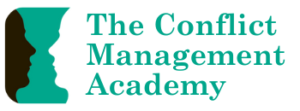Unlike many books about conflict resolution which provide advice about what to do in our interactions with others, this book focuses on what we can do within ourselves. It’s a kind of mindfulness meets conflict approach to conflict transformation. The author explains that conflict is not some force outside us, happening to us. Rather it is a reflection of how we are and of what is happening within us. He argues that acting consciously from an undisturbed state is what transforms our conflict interactions from destructive experiences we dread and fear to constructive opportunities for transformative growth, for meaningful connections, and for insightful and interesting dialogues.
The book introduces the analogy of conflict as fire. The author says that we treat conflict as the fire – the force outside us that we must avoid, escape or control. The oxygen in conflict is the story. The narrative we apply to life. It consists of conditioning; our beliefs; our experiences; and our projections and expectations. The fuel in conflict is attachment. Attachment turns our story from information, a collection of data, to identity, our perception that the story is us. Attachment to our story is also our sense of identity, which creates “us” and “them”. The greater the attachment to the story, the more rigid the identity, the more intense is the conflict which in any way challenges the story. The heat is the movement of energy (what the author calls “e-motion”) we experience when something or someone triggers us.
Yampolsky argues that by viewing conflict as the fire alarm, rather than the fire, by turning inward, we can learn to respond to it with strength, clarity, and ease, instead of reacting to it with fear, avoidance, or aggression.
He introduces a four step self-inquiry tool for going inward in conflict, the Dis-Solving Conflict from Within tool. The four steps (to be undertaken in conjunction with a kind of mindful breathing) are:
1. Set aside the trigger. (As I experience this conflict situation, am I willing to look within me?)
2. Spot the story. (What is the first thought arising for me? Can I be the space for just this thought? Can I see/hear/experience this thought as words/image/sound/sensation?)
3. State the facts. (Can I handle this moment? Is this thought a threat to me at this moment?)
4. Relax into the discomfort. (Am I willing to fully and unconditionally feel the discomfort? This experience is valid and complete in itself.)
The book is a little disjointed as it moves from chapters that are autobiographical, to those reporting client stories, to those teaching mindfulness based techniques and some latter ones covering some more standard approaches to conflict resolution. However, I found the content on the four step inquiry tool for conflict transformation very interesting.

